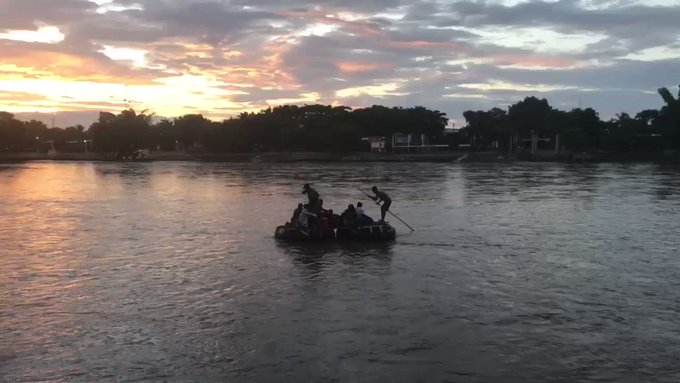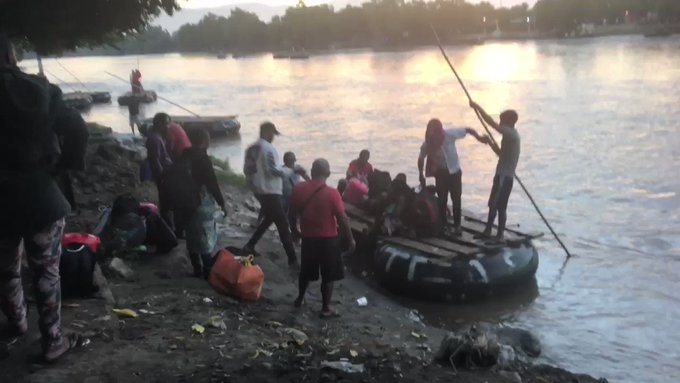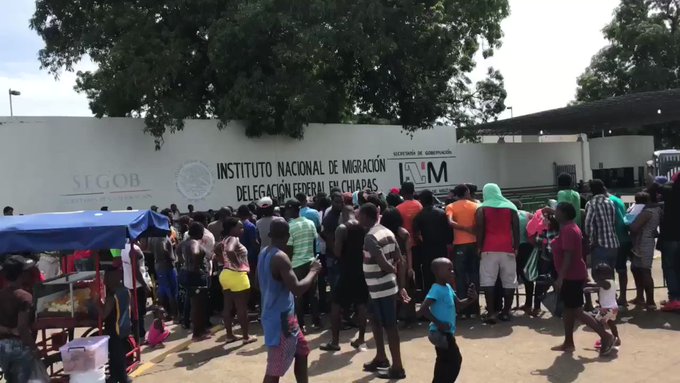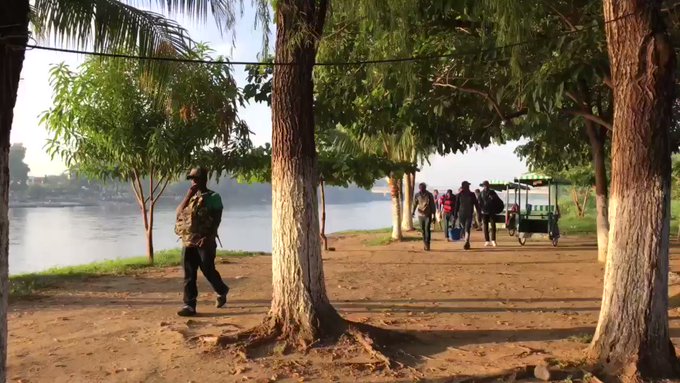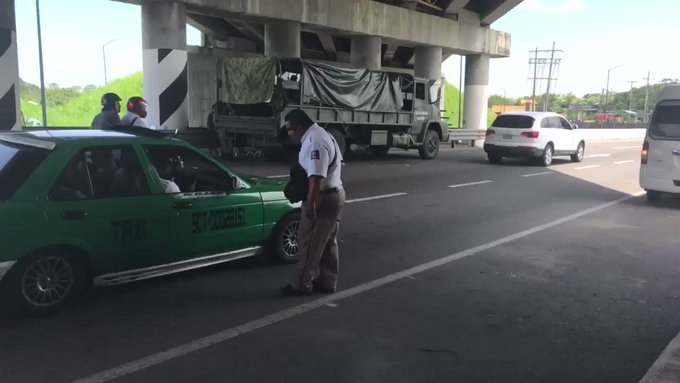Coming Soon to A Neighbourhood Near You?
Canada and the U.S. are favourite targets of Haitian “refugees”. The U.S. has been more resistant than Canada to this invasion. Canada’s rulers simply can’t replace the European founding/settler people fast enough. Anyone from the Third World will do. Change the demography, you change the character of the nation. So, coming soon to a neighbourhood near you?]
Who is 400 Mawozo, the Haitian gang accused of kidnapping American missionaries?

Haitians take part in a protest in Port-au-Prince on Dec. 10, 2020, International Human Rights Day, amid an upsurge in kidnappings perpetrated by gangs in the country. (Valerie Baeriswyl/AFP/Getty Images)By Miriam BergerOctober 17, 2021|Updated October 19, 2021 at 11:30 a.m. EDT
News that an armed Haitian gang kidnapped 17 members of an Ohio-based missionary group — including five children — on Saturday has placed Haiti at the center of an international crisis.
But for Haitians rich and poor, gang violence and kidnappings for ransom have become a tragically common part of life.
Abductions by the busload: Haitians are being held hostage by a surge in kidnappings
Haiti, the Western Hemisphere’s poorest country, holds the grim record of the world’s highest kidnapping rate per capita. One gang — 400 Mawozo — was responsiblefor 80 percent of abductions in Haiti from June through September, according to Gédéon Jean, director of the Center for Analysis and Research in Human Rights in Port-au-Prince.
Haitian officials say the group is behind Saturday’s kidnapping, too.
On Tuesday, Liszt Quitel, Haiti’s justice minister, told The Washington Post that the gang is demanding a ransom of $1 million per hostage.
Quitel said that it wasn’t clear whether the five children, including an 8-month-old, were part of the ransom amount, and that the gang was probably expecting to negotiate. “Usually they request more, then people close to the kidnapped persons will negotiate,” Quitel said.
“The welfare and safety of U.S. citizens abroad is one of the highest priorities of the Department of State,” an agency spokesperson said Sunday, confirming that 16 U.S. citizens had been kidnapped. “We have been in regular contact with senior Haitian authorities and will continue to work with them and interagency partners.” (One of those kidnapped is a Canadian.)
White House press secretary Jen Psaki said Monday that President Biden was receiving “regular updates” on the efforts of the State Department and FBI to secure the release of the hostages. Meanwhile, unions in Haiti launched a general strike Monday to protest the nation’s worsening security situation.
Here’s what to know about 400 Mawozo and Haiti’s gang violence.
American missionaries and family members kidnapped in Haiti by ‘400 Mawozo’ gang, groups say 17 missionaries kidnapped in Haiti Members of Ohio-based Christian Aid Ministries, including 16 Americans and one Canadian, were kidnapped in Haiti on Oct. 17 near Port-au-Prince. (Reuters)
What to know
- Who is 400 Mawozo?
- Who else has the gang targeted?
- Why are gangs surging in Haiti?
- Why are kidnappings so common in Haiti?
Who is 400 Mawozo?
400 Mawozo is a notoriously violent gang that has taken control of roads and communities in and around the Haitian capital, Port-au-Prince. It controls part of Ganthier in Croix-des-Bouquets, the area outside the capital where the Christian Aid Ministries members were seized Saturday.
From Creole, the gang’s name loosely translates to “400 simpletons,” or “400 inexperienced men.” But the group is widely feared for using rape and assassination to maintain its grip on Haitian streets, businesses and power players. It has also been associated with extortion and a new trend of mass kidnappings from cars and buses. And it has targeted clergy and churches — a red line for many in the Catholic-majority Caribbean nation.
Haitian police issued a wanted poster for the gang’s alleged leader, Wilson Joseph, nearly a year ago, according to the Associated Press. He faces a string of charges that include murder, attempted murder, auto theft, hijacking of goods and kidnapping.
Joseph goes by the Creole nickname “Lanmò Sanjou,” roughly meaning: “Death doesn’t know which day it’s coming.” Despite the warrant against him, he has posted videos describing in detail some of the crimes the gang is alleged to have committed.
The group’s reported second-in-command, Joly “Yonyon” Germine, is in jail. Haitian authorities are trying to negotiate with him.
Who else has the gang targeted?
In April, 400 Mawozo kidnapped five priests and two nuns, among them French nationals, and held them in harsh conditions for three weeks. Catholic universities and schools in Haiti shut down in protest. The gang demanded $1 million for the group’s safe return. Haiti’s justice minister told the Wall Street Journal on Monday that a ransom was paid for the release of just two of the priests abducted in April. The group was ultimately released.
400 Mawozo’s targets run the gamut: It has fought with rival gangs; kidnapped businesspeople, police officers and street vendors; forced youths in areas it controls to beat up captives; and extorted communities for money.
Its use of violence on the young and old has further traumatized — and desensitized — another generation of Haitian youth. Many of the gang’s victims are not specific targets, but rather bystanders.
Why are gangs surging in Haiti?
Haiti, a former French colony also once occupied by the United States, has been battling gang violence for decades. Saddled with weak political institutions and endemic poverty, the country has long seen its politicians and businesspeople accused of aligning with gangs to carry out their bidding.
As the country’s politics and economy continue to spiral downward, some gangs have become increasingly brutal and brazen. The situation became even more volatile in July, when President Jovenel Moïse was assassinated. The Biden administration has since backed Haiti’s embattled interim prime minister, Ariel Henry.
All the while, gangs profit by taxing communities they control for basics like electricity, water and bus stops, according to Haiti’s Center for Analysis and Research in Human Rights. They impose fees on small- and medium-size traders and vendors, and demand cuts from charities, public services and private companies. They extort politicians and businesspeople by offering protection — or by kidnapping them for ransom. Gang networks reportedly reach into the top echelons of Haiti’s political and economic institutions.
Haitian police and politicians are too weak — or co-opted — to stop them. Journalists, human rights advocates and everyday Haitians who try to report these abuses risk putting themselves in grave danger by incurring the wrath of a gang or its patron.
Why are kidnappings so common in Haiti?
Haiti has periodically faced waves of kidnappings, but analysts told The Post this month that the current surge was the worst in years.
In just the first six months of 2021, Haiti recorded at least 395 kidnappings, compared with 88 in the same period last year, according to the Center for Analysis and Research in Human Rights.
Unchecked by the government and police, gangs have brazenly kidnapped clergy from churches, as well as Haitian asylum seekers recently deported from the United States. Those who can afford it have fled or travel with heavy security.
Ransoms, in turn, vary widely and sometimes can be negotiated down. Abductees are frequently in custody for 48 to 72 hours before a price is set.
Quitel, the justice minister, said the FBI and Haitian police have been in contact with the kidnappers — but the negotiations could take weeks, the Wall Street Journal reported.
The U.S. government has a long-standing policy of not paying ransoms for American citizens abroad. The State Department did not immediately respond to The Post’s request for comment on the ransom.


